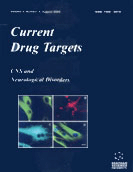Abstract
Neuron viability and defense against neurodegenerative disease can be achieved by targeting mitochondrial function to reduce oxidative stress, increase mitochondrial defense mechanisms, or promote energetic metabolism and Ca2+ homeostasis. Exposure to estrogen prior to contact with toxic agents can protect neurons against a wide range of degenerative insults. The proactive defense state induced by estrogen is mediated by complex mechanisms ranging from chemical to biochemical to genomic but which converge upon regulation of mitochondria function. Estrogen preserves ATP levels via increased / enhanced oxidative phosphorylation and reduced ATPase activity thereby increasing mitochondrial respiration efficiency, resulting in a lower oxidative load. In addition, estrogen increases antiapoptotic proteins, Bcl-2 and Bcl-xL, which prevents activation of the permeability transition pore protecting against estrogen-induced increase in mitochondrial Ca2+ sequestration. These effects are likely to be enhanced by antioxidant effects of estrogen, preventing the initiation of the deleterious “mitochondrial spiral”. The extent to which each of these mechanisms contribute to the overall proactive defense state induced by estrogen remains to be determined. However, each aspect of the cascade appears to make a significant if not obligatory impact on the neuroprotective effects of estrogens. Moreover each component of the cascade is required for estrogen regulation of mitochondrial function. Mechanisms of estrogen action and results of the clinical efficacy of estrogen therapy for prevention or treatment of Alzheimers disease are considered in the context of clinical use of estrogen therapy and the design of brain selective estrogens or NeuroSERMs.
Keywords: Mitochondria, NeuroSERMs, estrogen, neurodegenerative
Current Drug Targets - CNS & Neurological Disorders
Title: Mitochondria as Therapeutic Targets of Estrogen Action in the Central Nervous System
Volume: 3 Issue: 4
Author(s): Jon Nilsen and Roberta Diaz Brinton
Affiliation:
Keywords: Mitochondria, NeuroSERMs, estrogen, neurodegenerative
Abstract: Neuron viability and defense against neurodegenerative disease can be achieved by targeting mitochondrial function to reduce oxidative stress, increase mitochondrial defense mechanisms, or promote energetic metabolism and Ca2+ homeostasis. Exposure to estrogen prior to contact with toxic agents can protect neurons against a wide range of degenerative insults. The proactive defense state induced by estrogen is mediated by complex mechanisms ranging from chemical to biochemical to genomic but which converge upon regulation of mitochondria function. Estrogen preserves ATP levels via increased / enhanced oxidative phosphorylation and reduced ATPase activity thereby increasing mitochondrial respiration efficiency, resulting in a lower oxidative load. In addition, estrogen increases antiapoptotic proteins, Bcl-2 and Bcl-xL, which prevents activation of the permeability transition pore protecting against estrogen-induced increase in mitochondrial Ca2+ sequestration. These effects are likely to be enhanced by antioxidant effects of estrogen, preventing the initiation of the deleterious “mitochondrial spiral”. The extent to which each of these mechanisms contribute to the overall proactive defense state induced by estrogen remains to be determined. However, each aspect of the cascade appears to make a significant if not obligatory impact on the neuroprotective effects of estrogens. Moreover each component of the cascade is required for estrogen regulation of mitochondrial function. Mechanisms of estrogen action and results of the clinical efficacy of estrogen therapy for prevention or treatment of Alzheimers disease are considered in the context of clinical use of estrogen therapy and the design of brain selective estrogens or NeuroSERMs.
Export Options
About this article
Cite this article as:
Nilsen Jon and Brinton Diaz Roberta, Mitochondria as Therapeutic Targets of Estrogen Action in the Central Nervous System, Current Drug Targets - CNS & Neurological Disorders 2004; 3 (4) . https://dx.doi.org/10.2174/1568007043337193
| DOI https://dx.doi.org/10.2174/1568007043337193 |
Print ISSN 1568-007X |
| Publisher Name Bentham Science Publisher |
Online ISSN 1568-007X |
 3
3Related Articles
-
Mitochondrial Dysfunction and Oxidative Stress in Insulin Resistance
Current Pharmaceutical Design The Complex Actions of Statins in Brain and their Relevance for Alzheimer`s Disease Treatment: An Analytical Review
Current Alzheimer Research Properties and Pathogenicity of Prion-Derived Peptides
Protein & Peptide Letters Maternal Choline Supplementation: A Potential Prenatal Treatment for Down Syndrome and Alzheimer’s Disease
Current Alzheimer Research The ALK Gene, An Attractive Target for Inhibitor Development
Current Topics in Medicinal Chemistry Potential Role of (-)-Epigallocatechin-3-Gallate (EGCG) in the Secondary Prevention of Alzheimer Disease
Current Drug Targets Neuroprotection with Natural Antioxidants and Nutraceuticals in the Context of Brain Cell Degeneration: The Epigenetic Connection
Current Topics in Medicinal Chemistry Epilepsy, Regulation of Brain Energy Metabolism and Neurotransmission
Current Medicinal Chemistry Editorial (Thematic Issue: Focal Adhesion Kinase and Cross-Linked Signaling In Cancer)
Anti-Cancer Agents in Medicinal Chemistry Medicinal and Beneficial Health Applications of Tinospora cordifolia (Guduchi): A Miraculous Herb Countering Various Diseases/Disorders and its Immunomodulatory Effects
Recent Patents on Endocrine, Metabolic & Immune Drug Discovery (Discontinued) Genetic and Epigenetic Regulation of Phosphoinositide 3-kinase Isoforms
Current Pharmaceutical Design Cancer Therapy By Targeting Hypoxia-Inducible Factor-1
Current Cancer Drug Targets Sphingolipid Signaling and Hematopoietic Malignancies: To the Rheostat and Beyond
Anti-Cancer Agents in Medicinal Chemistry Advances in Hydrogels Applied to Degenerative Diseases
Current Pharmaceutical Design Anticancer Drug Design Using Scaffolds of β-Lactams, Sulfonamides, Quinoline, Quinoxaline and Natural Products. Drugs Advances in Clinical Trials
Current Medicinal Chemistry Modulating Mitochondria-Mediated Apoptotic Cell Death through Targeting of Bcl-2 Family Proteins
Recent Patents on DNA & Gene Sequences Regression of Oxidative Stress by Targeting eNOS and Nrf2/ARE Signaling: A Guided Drug Target for Cardiovascular Diseases
Current Topics in Medicinal Chemistry Insulin-Like Growth Factor 2 - The Oncogene and its Accomplices
Current Pharmaceutical Design Recent Development of Peptide Drugs and Advance on Theory and Methodology of Peptide Inhibitor Design
Medicinal Chemistry Applications of 211At and 223Ra in Targeted Alpha-Particle Radiotherapy
Current Radiopharmaceuticals


















